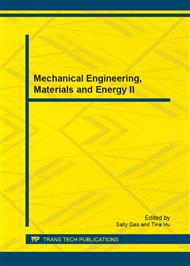p.469
p.475
p.480
p.484
p.490
p.496
p.500
p.505
p.511
Reduction of Composite Pellet Containing Indonesia Lateritic Iron Ore as Raw Material for Producing TWDI
Abstract:
Blast furnace process is still an important process for producing pig iron. The process needs high grade iron ore and coke. The two materials can not be found easily. In addition blast furnace process needs cooking and sintering plant that produces polluted gases. Utilization of composite pellet for pig iron production can simplify process. The pellet is made of iron ore and coal. In addition the pellet can be made from other iron source and coal. This paper discusses the evolution of phase during reduction of composite pellet containing lateritic iron ore. Fresh iron ore and coal were ground to 140 mesh separately. They were mixed and pelletized. The quantity of coal added was varied from 0 %, 20 % and 29 % of pellet weight. Pellets were heated with 10 °C/minute to 1100 °C, 1200 °C, 1300 °C and 1350 °C in a tube furnace and temperature was held during 10 minutes. Heated pellets were analyzed with XRD equipment. XRD of reduced pellets showed that iron phase change with coal and temperature. Lack of coal during heating results the re-oxidation of iron phases. This process is due to replacement of reductive atmosphere by oxidative atmosphere.
Info:
Periodical:
Pages:
490-495
Citation:
Online since:
January 2013
Keywords:
Price:
Сopyright:
© 2013 Trans Tech Publications Ltd. All Rights Reserved
Share:
Citation:


